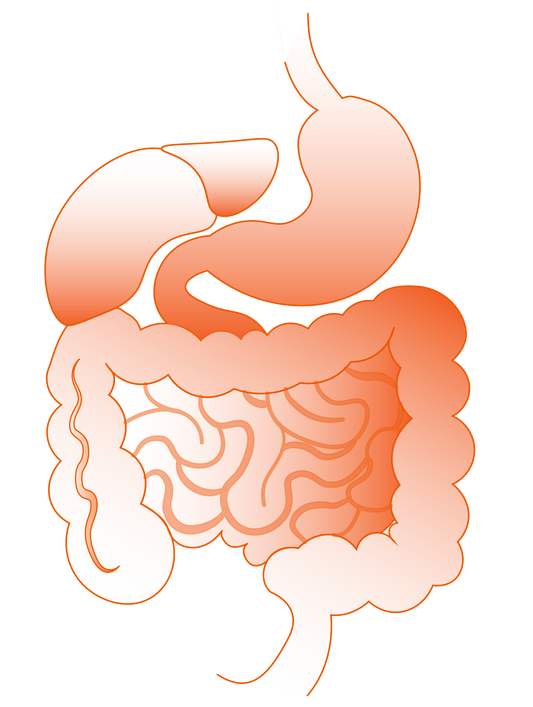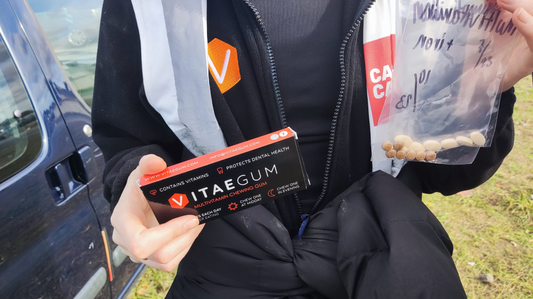taking supplements?
then
you
should
know
about
bioavailability
Definition:
The amount of a substance which enters into circulation when introduced to the body, and is therefore able to have an active effect.
The oral cavity is extremely absorbant
The mouth's lining, known as mucosa, is lined with tightly knit blood vessels right beneath the surface. This allows vitamins to traverse the thin mucosal membrane and slip through the one-cell-thick capillary wall, for direct entry into the bloodstream.
The oral cavity has three distinct zones of absorption: buccal (inside the cheek), sublabial (under the lip), and sublingual (under the tongue). Our gum is engineered to take advantage of all three zones for maximum uptake.
Bypassing the hotile gut environment
Much of the nutrients we swallow are destroyed before reaching the bloodstream, due to the harsh and acidic conditions in the gastrointestinal tract or what is known as the 'first-pass effect of liver metabolism'.
The A-Day targets the mouth instead, to bypass these challenges.
Why we bypass the gut?
Loss of nutrients before they even reach your bloodstream is a well-known problem inside the pharmaceutical industry.
The digestive process often destroys crucial active micronutrients, preventing them from reaching the systemic bloodstream - which has to happen in order for micronutrients to be delievered to the necessary organs.
Nutrients in conventional supplements must survive the gut and liver
Your stomach's natural acidity and enzymes can make supplements less effective, or outright destroy them.
There is a rapidly growing research field investigating how to prevent nutrients from being destroyed by gut acidity, emulsification, or metabolising enzymes.
For instance, B12 is an essential nutrient and common deficiency among vegetarians, but only has an absorption rate of 1-2% via the stomach. There are multiple expensive technologies, such as microencapsulation, trying to offset these common issues.
The A-Day targets the mouth instead to get around these problems.
Your diet can interfere with nutrient uptake
What you eat can have a profound impact on which nutrients your gut absorb, and can make your supplements less effective.
For example, we know that the phylate from grains and oats inhibits bioavailability of iron and zinc?
With The A-Day, you do not have to gamify your diet - as our gum is engineered for absorption in the mouth.
Common medications can reduce absorption
Many take their daily medications and supplements at the same time, not realising that many common drugs can interfere with nutrient uptake in the gut.
Mohn et al. (2018) have identified some of the most common interactions displayed in the table below, but these are only some of the interactions that have been identified.
| Medication | Nutrients affected |
|---|---|
| NSAIDs | Vitamin C, Iron |
| SSRI antidepressants | Vitamin D |
| Oral contraceptives | Vitamin B6 Vitamin B12 |
| Bronchodilators | Vitamin D |
| Corticosteroids | Vitamin D |
| Proton Pump Inhibitors | B-Carotene Vitamin B12 Iron |
| Hypercholesterolemics | B-Carotene, D |
| Anti-hypertensives | Thiamin (B9) Zinc |
| Oral hypoglycemics | Vitamin B12 Vitamin D |
A-Day is engineered for better bioavailability
Our multi award-winning supplement gum has been developed by a team of Oxford PhD medics, immunologists and biochemists to pack the ultimate nutritional punch.
Nutrients in the gum-base
Fat-soluble vitamins are contained in the gum base, released as you chew
High Quality Ingredients
We set high standards for our ingredients and manufacturing. Each ingredient is carefully sourced and selected, produced by an EU-certified manufacturer.
Nutrients in the coating
Fragile, water-soluble vitamins are contained in the coating of the chewing gum.
Slow(er) release
Unlike sprays and lozenges, our gum releases nutrients over a chew time of 10-15mins which allows for maximal nutrient release to the systemic bloodstream.
Blog posts you may be interested in:
Oxford University Innovation publishes an article about The A-Day
Oxford University Innovation has just shared our story on their...
Bioavailability is the future of supplements
Have you ever wondered why some supplements seem to have...
A product with a purpose: The A-Day Origin Story
The global malnutrition challenge Our journey began after an Oxford...





